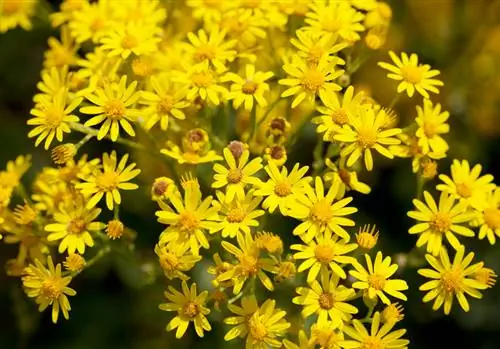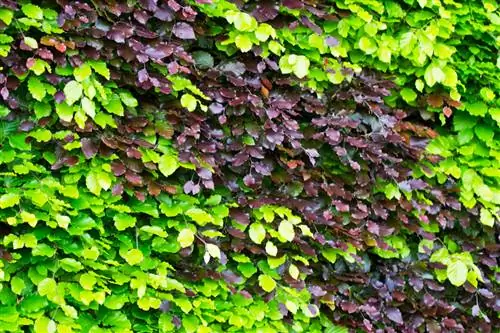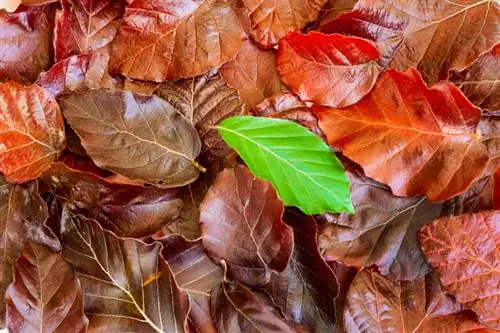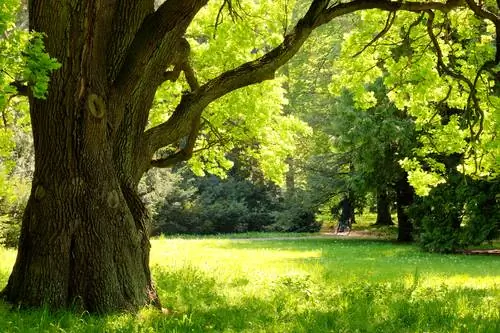- Author admin [email protected].
- Public 2023-12-16 16:46.
- Last modified 2025-01-23 11:20.
The hornbeam is often classified as a beech tree because of its name and its similarity to common beeches. However, it is a completely different type of tree, as hornbeams belong to the birch family. What are the differences between the two trees?
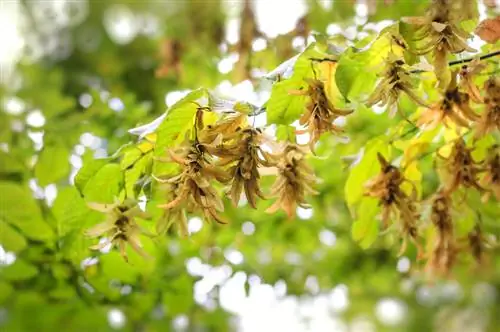
What is the difference between beech and hornbeam?
The main differences between beech and hornbeam are size, leaves, fruits, trunk, toxicity and site conditions. While beech trees grow up to 40 meters high and have smooth, light gray trunks, hornbeams only reach 25 meters and have cracked, brownish trunks. In addition, beech nuts are poisonous, but hornbeam nuts are non-toxic.
The main differences between beech and hornbeam
- Size
- leaves
- Fruits
- Tribe
- Toxicity
- Site conditions
Hornbeams don't get that big
Beeches grow up to 40 meters high. Hornbeams remain significantly smaller at 25 meters. They are often found in the forest under beech trees, where they shade the beech trunk.
Distinguish between beech and hornbeam by their leaves and fruits
Beech leaves are slightly grooved and only slightly sawn at the edge. They turn orange-yellow in autumn.
Hornbeam leaves are coarser, heavily grooved and sawn. You feel older. In autumn the leaves of the hornbeam turn golden yellow.
Hornbeam fruits are green and grow in clusters, while beechnuts are brown and stand alone.
The differences between the tribes
The trunks of the young trees are still relatively similar. Later, a beech tree can be identified by its very smooth, light gray trunk. Hornbeam trunks are brownish and much more cracked.
The wood of the beech is slightly reddish and turns red when steamed. Hornbeam wood is almost white and much harder than beech wood. This also gave the tree the names hornbeam or stone beech.
Beech fruits are poisonous, hornbeam nuts are not
Hornbeams do not contain any toxins, not even in the fruits. The leaves of beech trees are non-toxic, but the nuts are not. They can cause symptoms of poisoning in humans and animals.
This difference plays an important role when a new tree is to be planted in an area where children or grazing animals are playing.
Hornbeams thrive even in unfavorable locations
Beech trees need a nutritious, slightly moist but loose and sunny to partially shaded location. Hornbeams are much more robust and thrive even on sandy soils in the shade.
Larger beech stands therefore grow mainly in southern Germany, while hornbeams are more common in the north.
Tip
In terms of care and cutting ability, hornbeams and beeches do not differ from each other. Both trees make excellent hedge plants with beautiful fall foliage. The leaves of both trees stay on the tree for a long time.


